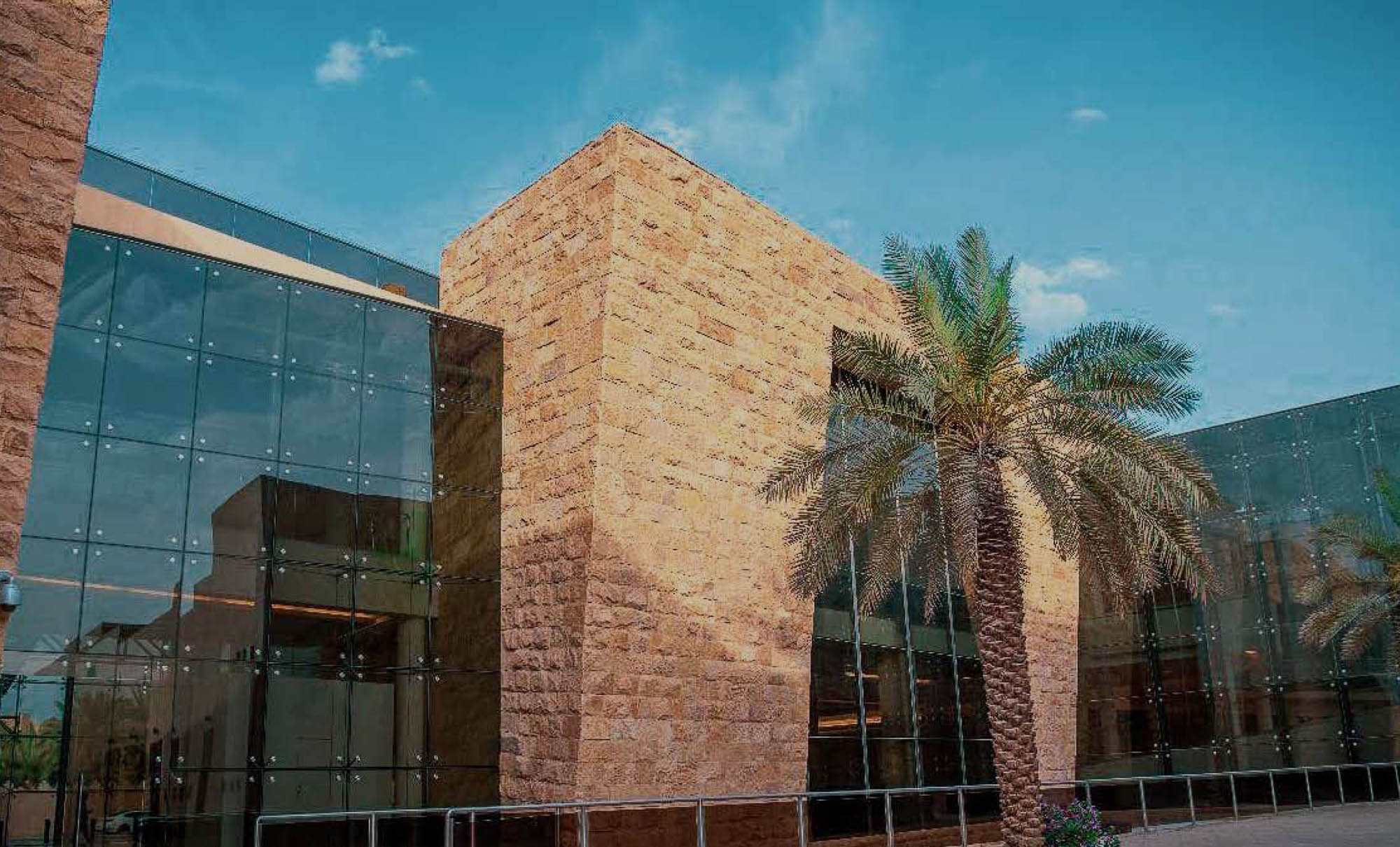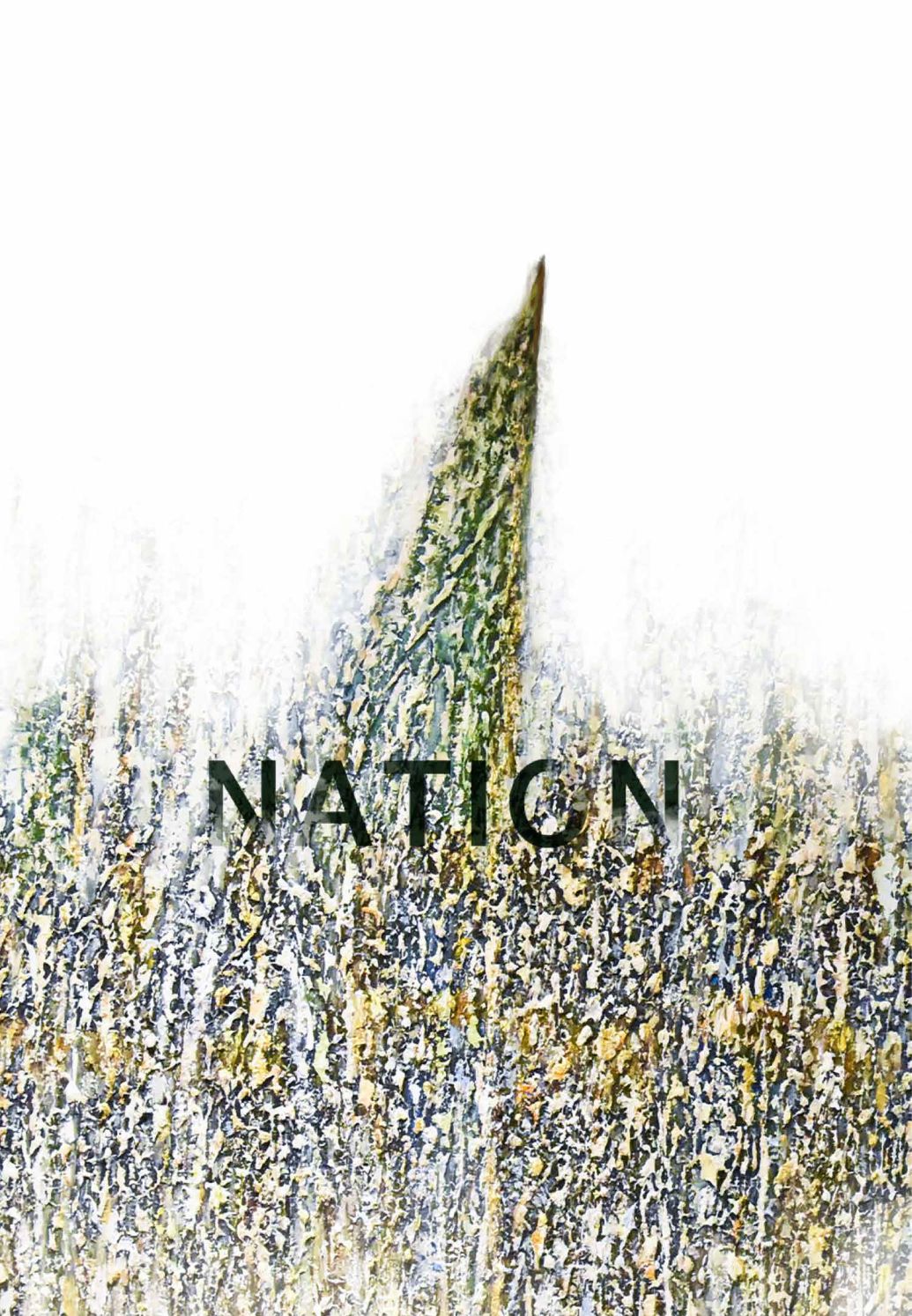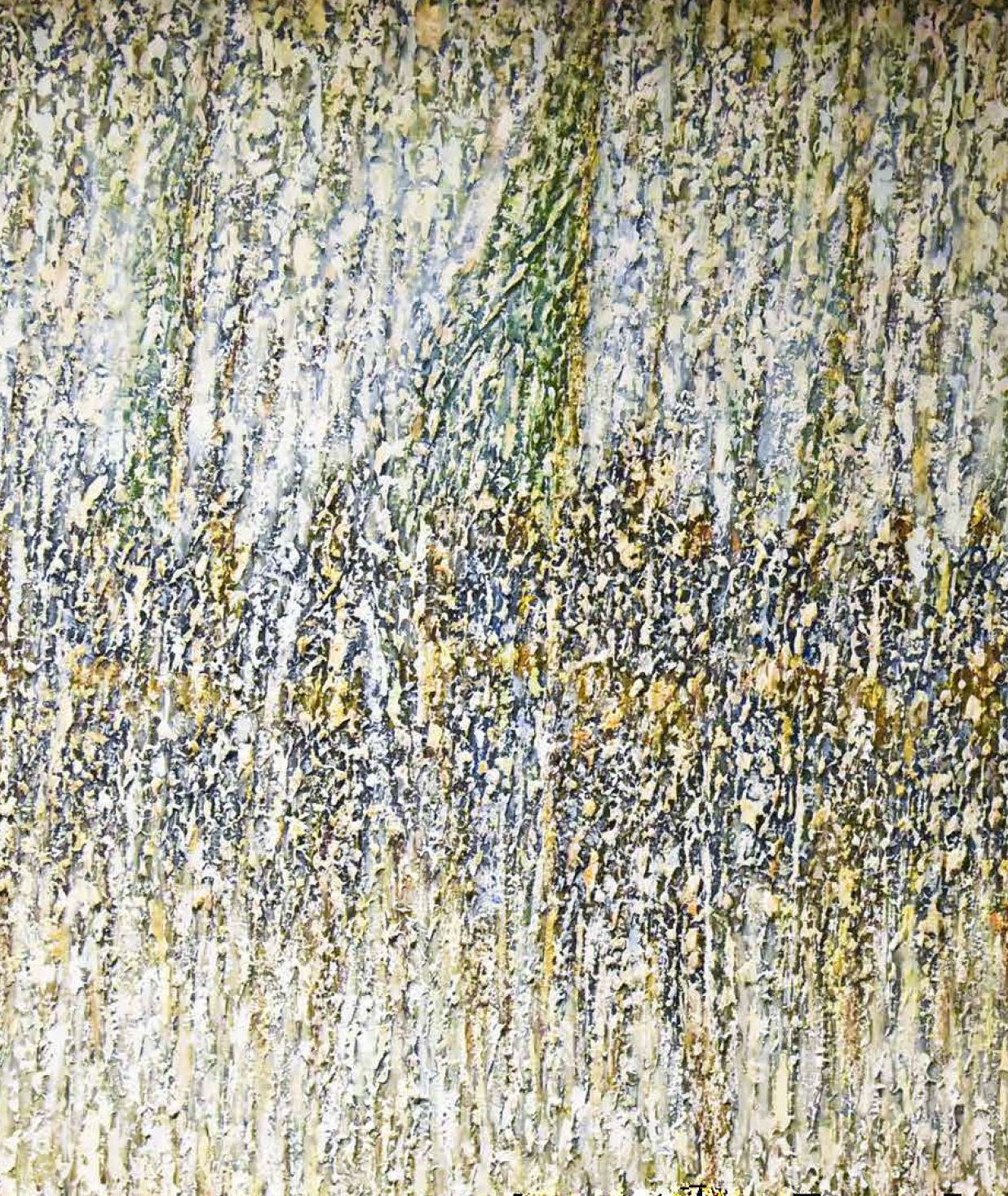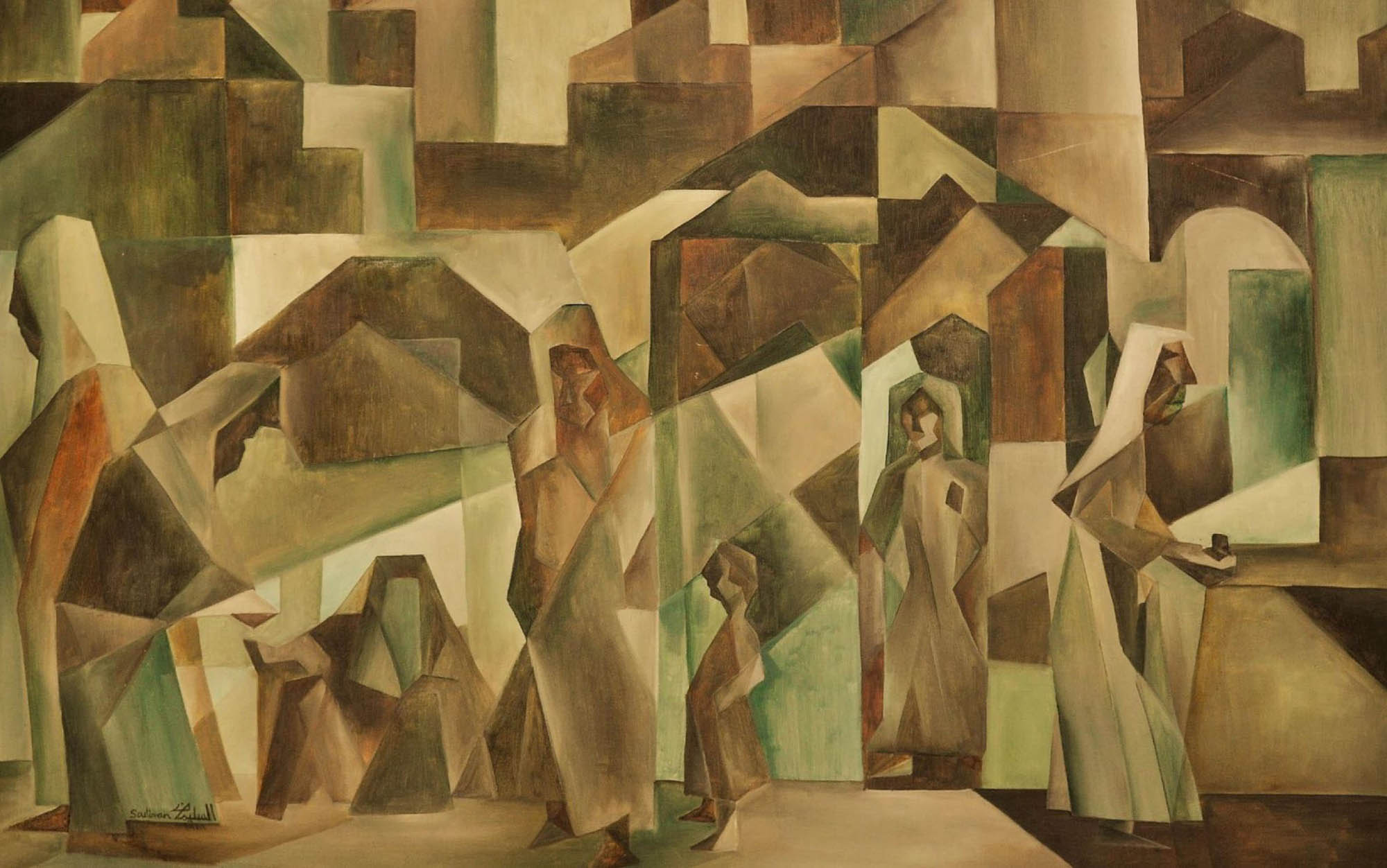Visual Memories in a Green Frame
An art piece by renowned Saudi artist Abdullah Hammas that captures the essence of a nation. Untitled 11, it dates to 2015. Oil on canvas. 66 x 75 cm. Courtesy the artist and Hafez Gallery.
In the late 1970s, art education became part of the school curriculum, coinciding with the birth of the visual arts movement in Saudi Arabia, supported by a government resolution and a newly found awareness of the arts. This resulted in a qualitative leap from regarding art as merely an individual talent to an understanding of art as a foundational cognitive orientation that can be taught, practiced, and acquired. Arts grew in importance over the decades with th government in 2020 establishing the Visual Arts Commission, under the umbrella of the Ministry of Culture.
Throughout the 90 years since the unification of the Kingdom, the art renaissance movement continued to create a competitive edge that is reflected on the visual scene. It might be true that “the ear loves before the eye sometimes,” as poet Bashar Ibn Burd(714–783) once said, but the eye is often the window to our senses and to the insights of our hearts. Especially if we accept that sight is stimulated by color, shape and form, how they interact and move, and the messages hidden within the details; all of which evoke emotions of a moment that cannot be forgotten.
What is striking in visual arts is the deep and harmonious language shared between visua communication, the philosophy of first impressions, and understanding the fuller picture. When contemplating visual arts, it can be said that the stillness of a painting or an image reflects a vitality created by the viewer and the angle from which the art is viewed.
Very early on, the influence of visual arts surpassed the early stages of luxury, and fast became a necessity. Visual arts became a tool to express identity and symbolism, and moved from being dependent on individual efforts to the sphere of specialized schools and different styles.

In parallel to the journey of the various forms of visual arts (painting, photography, sculpture, applied arts and craftsmanship), from conceptualization to embodiment as a tangible product, visual arts in the Kingdom lived through a story of transformation on two levels. The first relates to the impact of art education, and the second to the contribution of other government sectors.
The inclusion of art education in secondary school curriculums in the public sector in 1364 AH, focused on art activities such as copying the masters, rendering, painting landscapes, creating geometric designs, decorative installations, and color mixing. Taking the future of visual arts to higher institutional levels, and leading to the establishment of the Institute of Art Education in Riyadh.

The Saudi Ministry of Culture building is located in Ad Diriyah. Part of the World Heritage Sites List at Unesco, Ad-Dir’iyah, or Diriyah, was the first capital of Saudi Arabia.
On the other hand, this institutional role was supported by the efforts of the General Presidency for Youth Welfare, its clubs in the Kingdom’s regions, and the youth welfare offices and their efforts to activate the artistic movement. This was represented by a distinguished presence, locally and internationally, at competitions and exhibitions for the youth and the elite, and exhibitions of collections and contemporary art.
This effort was further supported by the establishment of associations and institutions interested in the various disciplines of visual arts. While exhibitions, events, special evenings, and individual efforts by pioneering Saudi artists contributed to driving the artistic movement towards more experimental, innovative and advanced spaces. Today we have reached advanced stages in dealing with, and investing in, the visual arts, while also preserving our own unique imprint and our Saudi identity in all products, tools of expression, and manifestations.
All of this stems from the spirit and identity of our homeland. Every cultural expression is first and foremost a national expression through which the artist reflects his or her emotional state at any given moment. This expression then automatically takes its place in the history of art and, in the end, it forms a national history par excellence.
It follows then, that in caring for, and seeking to serve, the visual arts, and in striving to support those who work within its sphere through the Visual Arts Commission, under the supervision of the Ministry of Culture, we do so because visual arts eventually form the building blocks of the memory of history; visual memories in a national green framework towards which all artists and creatives in the Kingdom of Saudi Arabia have played a part.


